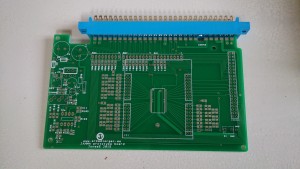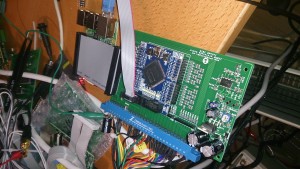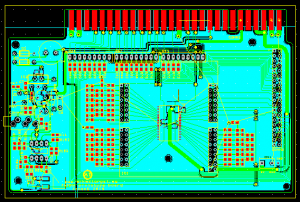Many good things have happened. 🙂
First the new PCB arrived.

The JAMMA connector was perfect, the new footprints I made was ok… I soldered the components and gave it a go. Worked fine! I had to modify the sound filter somewhat and I think I’ll do a re-design here, but it worked fine after adding a resistor.
So, sound amp is working, all inputs from joysticks and buttons are working, JAMMA connector is ok, Pi connector is ok, FPGA module works… I got rid of the last known problem in the FPGA and added a few new features. Now, for each bitmap, you can decide on what part of the screen it is visible. And I added the same thing for each sprite. I can now set a window for each sprite in which it is visible. Great for games with more than one area on the screen at once. 🙂

This is how it looks with all components mounted, except for the 3.5mm audio connector which has not yet arrived.
